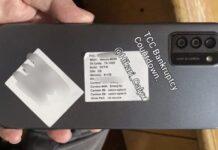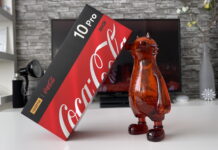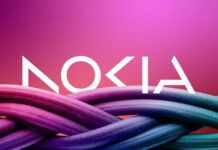When the Nokia N9 was out every review out there was raving about how good this device is and how stunning and original the design of the handset is and I completely agree with all of them. The problem was that MeeGo didn’t get as much love, so seeing the N9 form factor recycled in a new phone can only be a reason to rejoice, that unless you want Nokia to deliver something that’s different from all the other Windows Phone units out there…
Honestly speaking, the experience Nokia delivers is not different by any means, but at least the hardware is. The N9 design was kept 100% pure, but the diagonal of the screen was shrunk to 3.7 inches to make room for those capacitive buttons used in Windows Phone. The device measures 12.1mm in thickness, weighs 142 grams and adds a camera button to the original N9 layout. The same microSIM and microUSB upper area covering mode is used, with discrete lids that integrate perfectly into the body of the smartphone.
The policarbonate unibody chassis is back and it’s here to stay, since this concept will be adopted by at least one more Nokia phone, the Lumia 900. Back to the display, this one is an AMOLED Clear Black unit, with Gorilla Glass protection and a 480 x 800 pixel resolution, just like the rest of the Windows Phone gang. The CPU inside this baby is a single core Qualcomm Snapdragon 1.4GHz ticker with Adreno 205 to give you all the gaming you need and can get from the Xbox Live universe.
Of course there’s no microSD card slot, keeping with the tradition of Windows Phone devices, but you get 16GB of internal memory and speaking of memory, you also get 512MB of RAM, just like on all the other WP7 handsets. Nokia Lumia 800 is a Windows Phone 7.5 Mango smartphone, with support for HSDPA connectivity (14.4Mbps), WiFi, Bluetooth 2.1, stereo FM radio, A-GPS and noise cancelation technology. There’s an 8 megapixel camera at the back, with Carl Zeiss technology, autofocus, dual LED flash, geotagging, 720p 30 fps video capture and no secondary camera at all.
The camera here seemed better than on the N9 to me and it’s not just an impression, since I’ve read online that this sensor actually does a double bitrate compared to the N9, when it comes to video capture. It reaches 15Mbps when filming, in case you’re wondering. The battery inside the Lumia 800 is a Li-Ion 1450 mAh unit, good enough for 13 hours of 2G talk time, 55 hours of music or 2-3 days of average use. There was an initial battery problem with this handset, one confirmed by Nokia, but the software updates solved it.
As usual, the phone comes without DivX and Xvid support, so you’ll have to rely on Zune to convert the movies you want to watch to a supported format and the right codecs. The audio output of this phone is generated by that single speaker at the bottom, that seems a tad louder than the one on the MeeGo device with the same design. Since this is a Windows Phone unit, we get the usual Metro UI, that’s based on tiles, some of them more dynamic than in the previous WP iteration.
The People Hub and Picture gallery will swap around photos in a pretty eye catching way. Windows Phone Mango also brought real multitasking to the table when it came out, so if you keep the Back button pressed, you’ll enter an area that shows you all of the open apps. Sadly, there’s no way to close then from the multitasking menu, so instead you have to enter each of them and close it. If you wonder what’s unique software-wise on the Lumia 800 compare to other Windows Phone, well nothing is unique here. Nokia claims that they didn’t have enough time to customize the WP experience, but they’ll do so in the next OS version…
However, we do get some unique functions here, like Nokia Music, Nokia Drive and Nokia Maps. The first of them is useless, since it’s a simple Zune alternative with a Gigs function that shows you nearby concerts. Nokia Maps we already know from the Symbian world, while Nokia Drive is an interesting offline navigation solution, that allows you to download maps and keep them for offline use. The problem here is that you need to connect to the Internet anyway, so there’s not much of a win in here.
Nokia Lumia 800 sold like hot cakes in countries such as France and the UK, especially in the latter where it was bundled with an Xbox 360 and nobody would pass on this offer. I for one am not impressed with this smartphone, since it’s only the shell of the N9 handset with an immature Windows Phone on board. There’s nothing to separate this Nokia model from an LG Optimus 7 unit, for comparison’s sake. Of course, there are Nokia fans who will contradict me and say that this is the best phone ever, but I had a great deal of expectations from the Finns when it came to Windows Phone and I was a bit underwhelmed here…
I don’t dig the screen resolution, battery problem, I don’t like Zune or Nokia Music, we have 3 Maps solutions (Nokia Maps, Drive and Bing Maps), which is a pretty crazy idea by the way, the screen colours are washed out and the multitasking in WP Mango is immature… What more do you want?










